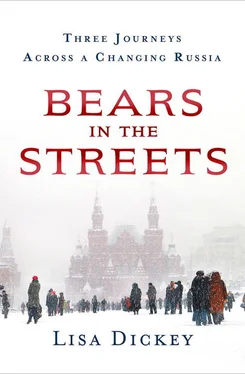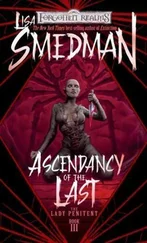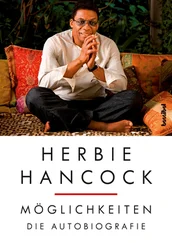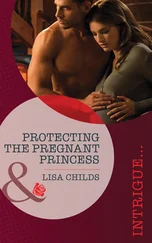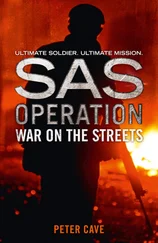I could not believe what I saw. He was so thin and ragged-looking, and he’d lost some of his teeth. He was ten years older than I, and he looked to me at that moment like an old man. I thought, Is this really my husband?
For any soldier, returning home from a bloody battle must come as a relief—but the country to which Naum Ilyich returned was in chaos. In February 1917, armed revolutionaries overthrew the Russian government, and a month later, Tsar Nicholas II abdicated his throne; the Russian empire was collapsing. In October of that same year, the Bolsheviks, led by Vladimir Lenin, seized control and declared Russia the first “Soviet Federative Socialist Republic.” But not all Russians supported the Reds, as they were called, and anti-Bolshevik factions known as the Whites rose up to battle them. Now, in addition to the fighting in Europe, Russia was plunged into a violent civil war—another conflict that nearly took Naum Ilyich’s life:
We were living in Kerch. The Whites had taken the city, and the Reds had retreated to hide in catacombs in the mountains nearby. The Whites stormed through the city, looking for young men to take away with them.
They came into our building, grabbed my husband in the stairwell and started to drag him away. I came running out with our newborn daughter in one arm, and grabbed him with the other. I refused to let him go. I knew that most of the men who were taken away would never return.
They were furious that I wouldn’t let him go, and burst into our apartment to look for weapons. They started throwing things out of the bookshelves and closets. Suddenly, my husband’s Order of St. George medal that he had won in the war fell out. When they saw that, they let him go. That medal saved his life.
The Russian Civil War raged for five years. When it ended in 1922, the Bolsheviks were in power, and Vladimir Lenin established himself as leader of the new Soviet Union. Although the USSR was envisioned as a Communist state, Lenin launched reforms known as the New Economic Policy, or NEP, under which certain people—called NEPmen—were allowed to engage in small-scale private enterprise to help reinvigorate the shattered economy.
Naum Ilyich became a NEPman. He ran a private mill in the early 1920s, which enabled the young family—now with three children—to enjoy a comfortable life. But comfort was fleeting: after Lenin’s death in 1924, new Soviet leader Joseph Stalin abolished NEP and launched a violent backlash against NEPmen, who were branded as dirty capitalists. The children of NEPmen were denied entrance to kindergartens, so Lia, the couple’s youngest child, was forced to take her mother’s maiden name of Gurevich. To her father’s shame and distress, Lia never took back his name.
Stalin launched the first of his Five-Year Plans in 1928, rushing to industrialize the country at a terrible cost, eventually plunging large swaths of the Soviet Union into famine. Naum Ilyich, whose private mill had been seized, found work in a quarry, where he was forced to labor 16-hour days for meager pay. Maria Mikhailovna did her best to feed the children, but the family had very little; when Lia fell ill with typhus, her father fed her noodles brought home from his quarry rations.
These were terrible times, and they got worse in 1930 when Naum Ilyich hurt his shoulder in an accident. No longer able to work at the quarry, and with no other employment prospects, he took the dramatic step of leaving his wife and children in Kerch and heading north to Leningrad, in hopes of finding work there.
By now, the young family had already endured war, famine, and devastating economic privation. Then, the Terror began.
Throughout the 1930s, Stalin stoked fear and paranoia across Russia, ordering the arrest, imprisonment, and execution of millions of people, often for no reason at all. In 1932, Maria Mikhailovna’s father became one of those arrested when, after noticing a shortage of whistles at the factory where he worked, he’d melted down five-kopek pieces to get enough copper to make new ones. He was charged with the crime of defacing the Soviet seal—the hammer and sickle on the melted coins—and thrown into prison. Yet he was one of the lucky ones, serving just three months for his “crime.”
* * *
That same year, Naum Ilyich finally scraped together enough money to bring Maria Mikhailovna to Leningrad. She brought their eldest daughter and left the other two children, including Lia, in Kerch with their grandparents. Two years would pass before she could afford to return for the younger two children.
When she did come back, “she brought a suitcase filled with treats for us,” recalled Lia, who was a robust, plainspoken woman of 72 when she told me this story. “White bread and buns. I hadn’t seen white bread in ages. It was the best thing I had ever tasted.”
The late 1930s were a terrifying time for many Russians, but a happy time for Lia. Her family was together at last, living just outside Leningrad in the village of Levashovo. She was a bright young student with hopes of studying at Leningrad State University, a goal she achieved in 1940, enrolling in the university’s history department.
Yet once again, comfort was fleeting. During her first year at the university, her father was arrested at their home in Levashovo. When I asked why, she responded dryly, “You don’t ask that question in Russia. Nobody was arrested for anything sensible; people were just arrested. They didn’t have to have a reason.” Naum Ilyich was thrown into a Leningrad prison.
Lia forged ahead with her studies, even as she began hearing alarming reports of Nazi advances throughout Europe. Stalin and Hitler had signed a nonaggression pact in 1939, and the Soviet Union continued to go about its business in the vain belief that Hitler would honor the pact. But on June 22, 1941, the Germans invaded Russia.
“I will never forget that day,” Lia told me.
It was early Sunday morning when they attacked, and one of their planes was shot down between Levashovo and Leningrad. Of course, everybody went to see it, just like we were going to a show. We had an exam scheduled for the next day, and when everyone found out I had seen a shot-down German plane, they wanted to hear all about it.
It was exciting for us; we didn’t really know what war was. But I remember the sad eyes of my professor. He gave everyone a top mark on the exam that day, because he knew grades didn’t mean anything anymore. He knew what was coming. He ended up starving during the blockade.
I didn’t know what war was back then. But I know now.
The whole of Leningrad was soon to learn, in one of the most tragic episodes of modern warfare. By the fall of 1941, the city was almost entirely cut off by encircling German troops. When planes bombed the food warehouses, there was virtually nothing for Leningraders to eat. Hundreds of thousands of people would starve or freeze to death before the nearly 900-day blockade was broken.
Like most of her fellow university students, Lia volunteered for the army; she was sent to the outskirts of Leningrad to erect anti-tank barriers. “We wore white uniforms and hats, and Nazi planes would fly over and shoot at us,” she recalled. “Many young women died that way. And they would drop leaflets on us, telling us to give up fighting them. I still have some of those leaflets.”
In the grueling winter of 1941–42, when the death toll in Leningrad was the highest, Lia worked at the hospital in Levashovo registering the sick, wounded, and starving. “I worked there until I couldn’t stand it anymore,” she told me. “After a while it was just too much to bear.”
The day I quit, a man who was starving to death had come in. He was begging for something to drink. “Give me some water! Please!” he kept saying, but the doctors said he was too starved and ill to drink. He needed treatment.
Читать дальше
